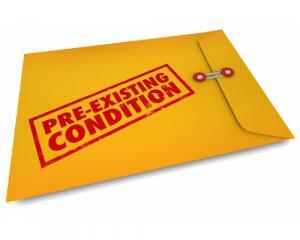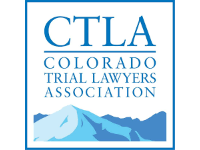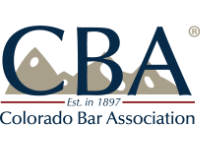
Call Us 24/7 For A Free Legal Consultation






The negotiations in most personal injury cases begin by delivering what we refer to as a demand letter to an insurance adjuster requesting a specific amount of money to compensate you for your injuries. One of the hardest parts of writing a demand letter is knowing how much you should ask for in your letter as you don’t want to ask for too little and not cover your bills, but asking for too much can signal to the adjuster that you may be trying to game the system. Here we will take a deep dive into how much to ask for in your personal injury settlement and why. This is just the first step of your journey though, so make sure to enlist a professional personal injury attorney near you for optimal results.

We take great pride in sending comprehensive and robust demand letters to insurance companies so that our clients receive the most compensation possible for their injuries. The personal injury business is a tricky one, because we know that there is no amount of money that can justify a serious injury or impairment to your health. On the other hand, the claims process and the court system only offers one avenue for compensation: money. Because no one can undo the harm that you suffered, it is our philosophy at Rector Stuzynski LLC to work as hard as we can so that our clients walk away from the process with the most money in their pocket possible.
Every personal injury case will be worth a different amount based on many different factors, but in general, in cases with less significant injuries that heal quickly, we typically see insurance companies paying some fraction of your medical bills for pain and suffering damages. Things get a bit trickier on the cases with significant injuries or cases of permanent disfigurement, or where you had to take a long time off work in order to recover. Depending on how long it takes to get your personal injury settlement check, the other party may have to pay for interest accrued on overdue medical bills.
When attempting to put a dollar amount on an injury claim it’s important to keep in mind that every case is different. It’s also not usually possible to put a dollar value amount on an injury claim right away. In most cases, we will wait for our client to finish treatment so that a full account of all bills and losses are accounted for before even attempting to put a value on a claim.
We make sure to account for everything possible when getting our numbers together so you don’t end up with less than the actual cost of your bills. Because money is all you are going to get out of the process, we take great pride in maximizing the recover our clients walk away with. Below we will take a look at all of the things the liable party will have to pay for.
Medical Bills – Past medical bills are obviously a cost to include, but future medical bills from injuries sustained in the accident should also be taken into consideration as well for situations that have long lasting injuries.
Lost Income – Any income lost from missed work due to the accident, injuries and subsequent medical treatments will be added to the amount they are liable for. You are even entitled to compensation if you took sick days from work, as you would not have otherwise needed to use those benefits if it were not for the accident causing your injury.
Property Damages – Many accidents take place on the roads, so property damages such as car, truck or motorcycle repairs are common in these types of claims. If the accident took place at your home or somewhere else and your property or belongings were damaged/destroyed, you would be able to claim that as well.
Pain & Suffering – Any pain and physical suffering will also be included, but this can be a tricky thing to value since there are no hard numbers for this cost and sometimes it can be hard to prove pain and suffering. Typically the amounts received for this part are based upon the seriousness of the injuries sustained as well as the pain felt during healing as well as future mobility. Because an insurance adjuster will generally look for any excuse possible to put a lower dollar amount on a claim, it’s important to carefully consider these pain and suffering damages and take the time to flush them out in a demand letter.
Disfigurement or Permanent Disabilities – If you lost a limb, finger, etc. you will undoubtedly be entitled to a much higher compensation package due to the life long nature of such an injury. Disabilities acquired from the accident such as a limp, limited mobility of your body, permanent injuries like back, neck and spinal cord issues are all liabilities of the at fault party. These types of injuries can also be difficult to put a dollar amount on, and it can often be helpful to consult with a medical professional to assess the nature and duration of any long lasting physical impairment. Many good doctors will write a report detailing the nature of any permanent injury or impairment and this should always be included with a demand for these types of injuries if you want to make sure you get a full and fair lump sum compensation package or structured settlement.
Emotional Damages – The effect that all of this has on you can take a toll and be extremely stressful. Some of us will handle it better than others, but at the end of the day all of it is still a category of damages that are compensable under the law. Articulating this type of damage requires nuance, as you don’t want to either oversell or undersell the emotional component of dealing with your injuries.
Fault – You also need to ask yourself if you were partially at fault for the accident because if so that can have a major effect on the outcome of the case as well as compensation. Even in cases in which you were not at fault, an insurance adjuster may assign a degree of negligence to you. Convincing them that this is unfair can be an uphill battle, but is necessary to ensure that you are fully compensated so you don’t walk away with only a fraction of your damages. If there is no video evidence, witness testimony or any other evidence, it can become much more difficult to convince an insurance adjuster to accept full responsibility. Keep in mind, if the adjuster portions some of the fault to you, they will use this to reduce the amount of money paid out to settle the claim.
Once you’ve calculated the amount you think you should get, don’t go crazy with your opening number. A good demand letter requests a fair and full settlement but doesn’t tack on anything unreasonable that will cause the adjuster to roll his or her eyes. We know it’s easy to think that your inconvenience should be worth a lot more, but asking for unreasonably high amounts is just going to make the adjuster pick apart your claim even more than normal and they will most likely just give you an extremely low number as a response and then dig in their heels. Knowing what questions to ask before accepting a personal injury settlement will also help you determine if their offer is fair and comprehensive.
Typically the amount requested for damages will go at the end of your demand letter with an explanation detailing the expenses you accrued as well as highlighting the negligent nature of the at fault party’s actions that caused the accident in the first place. We take pride in our demand letters, as they are always comprehensive. We are sure to note not only the nature of past treatment, but also the prolonged pain, loss of income, and any permanent injuries as well to ensure the adjuster knows that our dollar amount demand is justified and we’re not just playing around.
One thing to keep in mind is that personal injury lawsuit timelines usually take many months from injury to final settlement. You don’t want to even start negotiating until you have completed medical treatment, in most cases. Because of your body’s natural propensity to heal, you will notice that you forget a lot of the pain and inconvenience that you went through closer in time to the accident. That is why we always recommend to our clients that they keep a detailed journal documenting their symptoms and the way that they have affected them. These notes documenting the pain and other symptoms are crucial to work into a demand letter so that the adjuster is made aware of the nature of your injuries to the fullest extent possible.
All of the things mentioned in this article and more come into play when negotiating a personal injury claim. Sometimes, it’s best if your claim is handled by someone that is familiar with the claims process and knows exactly what to do. It’s important to realize that you don’t have to go at this alone. We are here for you to answer any questions or handle your case from start to finish so don’t hesitate to reach out to us anytime and speak with one of our Colorado personal injury attorneys at (719) 578-1106 or stop by our office in Downtown Colorado Springs. We look forward to working with you and getting you the compensation you deserve.
We serve clients injured anywhere throughout the state of Colorado, but we focus on residents of these areas: Colorado Springs, Manitou Springs, Fountain, Briargate, Monument, Black Forest, Pueblo, Canon City, Larkspur, Security-Widefield, Peyton, Castle Rock, Teller County, El Paso County, Elbert County, Park County, Douglas County and beyond.
Consultations are always free and available 24/7 over the phone.